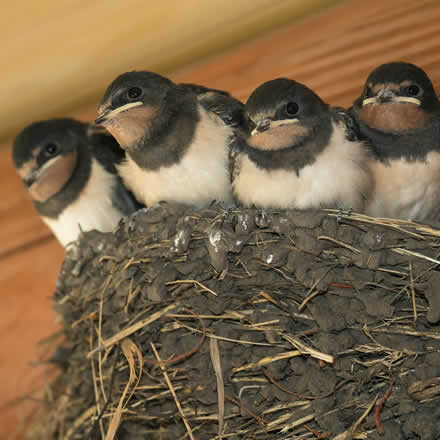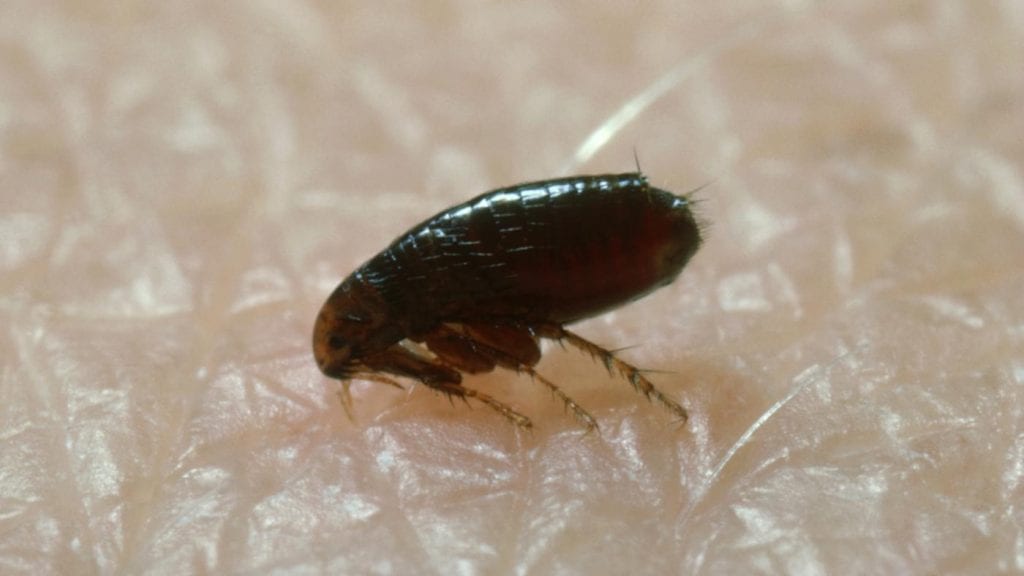Characteristics and General Information
Fleas are very small insects without wings and their size ranges from 1 to 10 mm. However, fleas can jump long distances and can spread quickly around your home.
They can be easily recognised by having the following characteristics:
- Very compressed body
- Enlarged hind legs that allow them to jump over long distances
- Piercing mouthparts for sucking
- Very strong tarsal claws which are used to grasp onto the host
- Rear pointing hairs that allow them to move easily through hair or fur of their host.


Common Fleas in Australia
The main flea species in Australia are:
- The introduced cat flea (Ctenocephalides felis)
- The introduced dog flea (Ctenocephalides canis)
- Rare specie Human flea (Pulex irritans)
It can be almost impossible to distinguish different species of fleas with an untrained eye. However, the treatment for most fleas is the same.
If you suspect flea infestation, you may contact us for a FREE consultation.
Tell us your problem
FREE QUOTE
A Flea's Life Cycle
Adult fleas mate on their hosts and lay eggs, which eventually fall off onto the ground. A female flea can lay between 15 and 20 eggs per day and over 600 during her lifetime. Eggs hatch between two days to two weeks. Eggs turn to larvae which can end up anywhere indoors, under boards, rugs and even on furniture and beds. Larvae can also be found in outdoor areas, such as sub-floors and grassy areas.
Larvae are completely blind and do not have legs. Larvae remain in this stage for a week or sometimes months, depending on the temperature and the availability of food. Larvae do not feed on blood like adult fleas do, but they feed on disgorged blood as well as other organic debris such as dead skin, hair and feathers. After this stage, adult fleas will emerge from their cocoons which can take 5 to 14 days.
Fleas are wingless as and can’t fly, but can jump long distances. Flea larvae are mobile, but move slowly by crawling from one location to another to seek food and shelter.


Flea On Human Skin
Pet Fleas
Fleas can detect external stimuli such as vibration, heat, noise or CO2. Household pets such as cats and dogs can easily be infested with fleas if not treated immediately.
Outside stimuli are an indication that there is a potential host nearby. After they emerge from the cocoon, adult fleas will feed on blood for survival. Although they can survive without a meal for about 7 days, adult fleas need to feed first before laying eggs.
If a dozen fleas are left for 30 days onto a host, they can produce about 250,000 fleas of different stages. A typical flea population is made of 50% eggs, 35% larvae, 10% pupae and only 5% adult fleas.


Fleas Live On Pets
Why are fleas considered as pests?
Why do we consider fleas as pests? There are several reasons. Pet owners spend large amounts of money on keeping fleas away from their cats and dogs. Fleas can cause dermatitis on both cats and dogs and can even transmit tapeworms. For humans, they are simply the cause of irritation on the skin. But this does not mean that fleas are harmless. Some people can have a severe reaction or infection from flea infestation. Children can develop tapeworm infestation if they accidentally eat a tiny flea.
Most flea “bites” are located on the ankles or legs. The irritation can last from minutes to even days in some cases. The easiest way to distinguish a flea bite is by looking for a small and red swollen spot that itches.
To find out more about common pests in Australia, you may sign up to our mailing list. Get the latest news from our team. Join now and get a FREE pest control guide!
Common Areas Infested By Fleas
Where can we usually find fleas? In residential areas, we can find fleas unfortunately where there are usually cats or dogs. Fleas can be found in places where our pets spend most of their time. If you have a flea-infested cat that likes to spend time on your window, that is the place where the flea eggs will gather, grow into larvae and turn into adult fleas. Some pest controllers call these places hot spots.
Fleas thrive in areas that are away from direct sunlight, such as the shady areas behind your garage or your sub-floor. Fleas are very active during the warm summer season. Fleas prefer temperature between 20 to 30 degree Celsius.
Bird Mites
Luckily for us, bird mites are not disease carriers and they are considered as pests mostly because they like to bite people. Same as fleas, bird mites inject saliva which helps them during their feeding process. Saliva is the one that causes severe irritation and itching that are accompanied by rashes. Our blood is not good enough for them and they will usually die within 20 days.
Where can you find bird mites?
Bird mites can be found basically everywhere where birds make their nests. Pigeons are the most common bird mite carriers while starlings are the most usual culprit for domestic infestations. The birds can make their nests in roof voids and building occupants might not even be able to see the nests.


Fleas spread thru birds too
An Interesting Fact About Fleas
A human flea can jump 20 cm high and over 150 times its length. This is the equivalent of humans jumping 440 metres! And when they jump, fleas reach a speed of 100 cm per second with an acceleration of 140G. This speed is 20 times the speed of an Apollo rocket. This acceleration is equal to what we would feel if we crashed our car into a wall while going 300 km per hour. One more interesting fact is that fleas for some reason like women more than men.
Book the Masters Pest Control Sydney
Pest control is what we do best. We are professionally trained, insured and licensed in all areas of home and commercial pest extermination and fumigation. Talk to our team for any enquiries.
Our focus is on providing safe and natural pest management and prevention, perfectly suited for people who care about their families and loved ones. We get rid of the pests that spread diseases such as rats and cockroaches.

